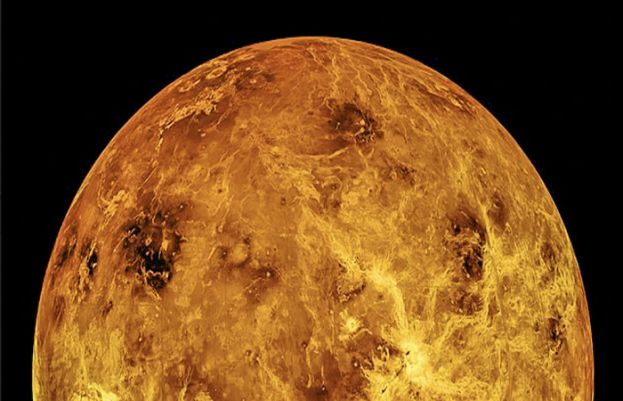Venus may have once been more dynamic and Earth-like than previously thought. A study led by researchers at Brown University reveals evidence suggesting that Venus exhibited Earth-like plate tectonics billions of years ago. Tectonic movements The findings are based on simulations using atmospheric data from Venus. These simulations indicate that the existing composition of Venus’ atmosphere and its surface pressure could have evolved due to early plate tectonic activities. This geologic process, vital for life, consists of continental plates that move, collide, and slide beneath one another. Such tectonic movements on Earth, intensified over billions of years, sculpted continents, mountain ranges, and triggered chemical reactions. A sharp detour These reactions played a pivotal role in stabilizing Earth’s temperature, paving the way for life’s development. However, Venus’ fate took a sharp detour, leading to its present-day hostile conditions, with temperatures soaring high enough to melt lead. Scientists prove how many daily steps you should take to avoid early death Hunter’s Moon eclipse and an ultra-bright Jupiter coming this weekend Digital distraction: Our phones are irresistible because we crave novelty Colossal cryovolcanic comet that exploded in space is headed toward Earth Music as a pain reliever: The power of your playlist The new study challenges the idea that Venus has always had a static single plate known as a “stagnant lid.” The study suggests that Venus, around 4.5 billion to 3.5 billion years ago, underwent tectonic movements comparable to those on early Earth, but on a much more limited scale. Similar sister planets Study lead author Matt Weller completed the work while he was a postdoctoral researcher at Brown and is now at the Lunar and Planetary Institute in Houston. “One of the big picture takeaways is that we very likely had two planets at the same time in the same solar system operating in a plate tectonic regime – the same mode of tectonics that allowed for the life that we see on Earth today,” said Weller. This revelation highlights the potential of microbial life existing on ancient Venus, hinting that these sister planets were more similar in their early histories than previously assumed. Plate tectonics and habitability The research not only reshapes our understanding of Venus but also underscores the temporality of plate tectonics and planetary habitability. Study co-author Professor Alexander Evans noted that planets might transit between various tectonic states. “We’ve so far thought about tectonic state in terms of a binary: it’s either true or it’s false, and it’s either true or false for the duration of the planet,” said Professor Evans. “This shows that planets may transition in and out of different tectonic states and that this may actually be fairly common. Earth may be the outlier. This also means we might have planets that transition in and out of habitability rather than just being continuously habitable.” Looking beyond the surface The study began with a broader objective to discern how exoplanetary atmospheres could be markers of their early histories. By using Venus as a reference, the team soon realized the mismatch between simulations based on the stagnant lid assumption and the actual atmospheric composition of Venus. A breakthrough came when the model incorporated limited early tectonic movement, mirroring Venus’ current state. “We’re still in this paradigm where we use the surfaces of planets to understand their history,” said Professor Evans. “We really show for the first time that the atmosphere may actually be the best way to understand some of the very ancient history of planets that is often not preserved on the surface.” Study implications The implications of this research extend beyond Venus. Upcoming NASA DAVINCI missions will measure Venusian atmospheric gases, which might further support these findings. But a lingering question remains: What caused Venus’ plate tectonics to cease? “Venus basically ran out of juice to some extent, and that put the brakes on the process,” said study co-author Daniel Ibarra, a professor in Brown’s Department of Earth, Environmental and Planetary Sciences. The researchers said that the details of how this happened may hold important implications for Earth. “That’s going to be the next critical step in understanding Venus, its evolution and ultimately the fate of the Earth,” said Weller. “What conditions will force us to move in a Venus-like trajectory, and what conditions could allow the Earth to remain habitable?”
Venus’ secret past may have implications for Earth’s future

